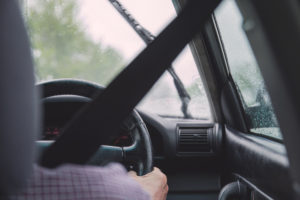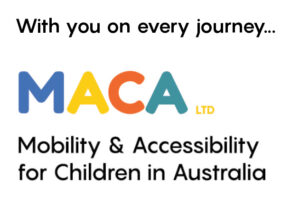 Safe vehicle travel for children follows strict processes in Australia. According to the RAA, nearly 60 child passengers in SA aged 0-16 years are killed or seriously injured each year on our roads. More than a third are aged 0-7 years.
Safe vehicle travel for children follows strict processes in Australia. According to the RAA, nearly 60 child passengers in SA aged 0-16 years are killed or seriously injured each year on our roads. More than a third are aged 0-7 years.
Under Australian law, regulations are in place to require children to use a child restraint, car seat or booster until they can effectively use an adult lap sash seatbelt. Children should be at least 145cm tall to safely sit in a standard car seat with an adult lap sash seat belt. At this height, their body segments are long enough to be safely supported with the seatbelt components appropriately positioned.

Source: Transport for NSW
Australian law also specifies that all car seats must meet Australian Standards – specifically the standard AS/NZS 1754. Any car seat sold in Australia must meet this standard, which covers materials, design, construction, performance, testing and labelling.
Unfortunately, although many car seats designed for children with special needs have been tested to other standards such as European and North American, none have been tested against the Australian standard. In order to use these seats legally in Australia, a strict exemption process must be followed.
First, parents should check whether there are any Australian Standards tested car seats that can meet the postural and behavioural needs of the child. In SA, the RAA safety centre is a good resource for this information and trials. Although they don’t have the same level of features as the special purpose seats, they are all slightly different, so may need to be considered. However, if there is not an appropriate seat, a special purpose or custom made restraint may be warranted.
We can then work with families and therapists to provide advice on the range of specialised car seats available and which may be best suited to your child, as well as any additional supports or considerations needed.
After a suitable special purpose seat is identified, your child’s GP or other medical doctor will need to write a letter of exemption explaining the reasons why a standard car seat cannot be used. If required, we can assist your prescriber with this.
It’s also worth considering that this process runs parallel to the NDIS. In order for funding to be allocated through your child’s NDIS plan to purchase a special needs car seat, your family will need to show that standard car seats will not meet your child’s needs, along with the exemption letter from your doctor and supporting information from a prescribing therapist.
While this process is a somewhat complicated and time consuming one, it is designed to carefully balance each child’s safety with their individual needs and meet the Australian legal requirements.
Other car safety devices
Other safety devices such as specialised harnesses or buckle covers may also be used to ensure the safety of your child when travelling. Use of these devices must also follow the above process. A GP letter of exemption must be carried at all times when your child is being transported in the vehicle in which those devices are used.
It’s also important to note that some safety devices may also fall within the NDIS Commission’s purview of restrictive practices. As such, some extra protocols may need to be followed before implementing these devices in your car.
A helpful resource
 In an Australian-first, allied health professionals, organisations and parents can now access a ‘one stop’ national website of resources for the safe transportation of children with disabilities and medical conditions.
In an Australian-first, allied health professionals, organisations and parents can now access a ‘one stop’ national website of resources for the safe transportation of children with disabilities and medical conditions.
Mobility and Accessibility for Children in Australia Ltd (MACA) created macahub.org to address a concerning lack of access to information that leaves many vulnerable children and their families travelling unsafely on our roads.
MACA Chief Executive Helen Lindner said a recent survey of parents, health professionals and organisations undertaken with Curtin University revealed stark challenges relating to the transport of children with disabilities and medical conditions in motor vehicles.
This includes more than half of caregivers reporting that their child had gotten out of their child restraint or their seatbelt while they were driving, and more than two-thirds of caregivers reported never receiving information on safely transporting their child.
“No family should have to worry about their family’s safety and well-being on any mode of transport. But a lack of accessible information until now has left many vulnerable children and their families travelling unsafely on our roads,” Ms Lindner said.
